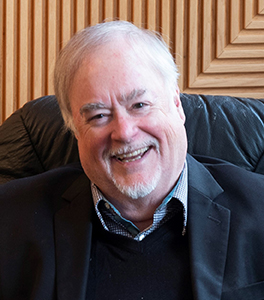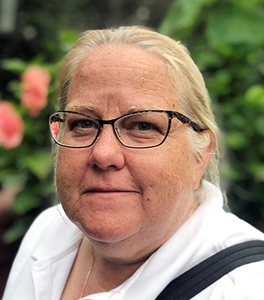 Therapeutic landscape gardens (TLG) are often designed for elders in nursing homes and senior housing to provide a soothing experience for the resident that brings them outside, closer to nature, and closer to the beauty of a well-designed garden. This senior population may exhibit a series of invisible disabilities (IDs), such as dementia, autism, PTSD, ADHD, sensory processing disorder, blindness, and deafness. These IDs can be found in up to half or more of the typical population and at least 80-90 percent of the elder population.
Therapeutic landscape gardens (TLG) are often designed for elders in nursing homes and senior housing to provide a soothing experience for the resident that brings them outside, closer to nature, and closer to the beauty of a well-designed garden. This senior population may exhibit a series of invisible disabilities (IDs), such as dementia, autism, PTSD, ADHD, sensory processing disorder, blindness, and deafness. These IDs can be found in up to half or more of the typical population and at least 80-90 percent of the elder population.
There are many articles about the design of these TLGs, but not many deal with the two main challenges in designing these gardens: a lack of instructions and reduced perception.
The first issue is the lack of an instruction set on how to design an elder therapeutic garden. Most books on TLG show all kinds of images of wonderful gardens, but none of them have an instruction set that will help a designer understand the steps that must be taken in order to design one correctly for elders. By 80, the typical elder has 20 percent of their visual performance range; by 90, it drops to 10 percent. Visual acuity is low, they cannot see clearly with sky brightness, colors are not easily distinguished, adjustment from dark to light takes 10-15 minutes. Vision can be very limited.
The second issue, which is even more important, relates to aging and sensory deprivation. Elders in nursing and dementia homes are generally coping with very limited ranges of sensory sensitivity. An older resident has perceptual sensitivity dramatically lower than when they were younger. By age 80-90, the sensory sensitivity of an elder is about 10-20 percent of what it was when they were young. Thus, their vision, hearing, tactile sense, thermal and olfactory sensitivity is very low. Their experience of the sensory garden can be limited compared to young designers who design these gardens, because that have a hard time seeing the garden, dealing with sky glare, recognizing color ranges, and smelling the flowers. Audible insensitivity can mean that they cannot hear the sounds of unsteady walking, low level talking of nurse aides, and other sounds over the environmental noise of the site.
To the elder resident, the gardens look less clear and more out of focus. They see groups of plantings, not individual plants. Colors blend together, as color vision is limited in range, resolution, and sensitivity. The design of the garden must take account of the fact that many elders have visual acuity in the 20:100 or greater (they see at 20 feet what younger folks see at 100 feet).
If the site is noisy or busy, the sounds of traffic, idling car engines, and people are all of concern. And areas that are light versus dark can cause visual failure due to slow adaptation (visual adjustment from light to dark). These areas can also cause a cognitive load due to complexity that is too great for the elder to process, as too much information is presented in the perceptual and cognitive fields. The experience is often unnerving and overwhelming. Overstimulation of the senses affects our sense of vestibular equilibrium (balance) as well.
Well-designed environments can alleviate these problems, via the use of scientific sensory and cognitive design principles. Yet most design schools do not teach about human perception or the science of human-centered building design.
Design schools believe, as the American Institute of Architects suggests, that expert intuition comes from a design education, and that this alone is adequate training to solve most architectural problems, which is far from correct. Intuition only works when designing for people who are like the designer, and those with disabilities are not often like the designer.
Reducing Sensory Noise
The experience of disorientation and discomfort are important to avoid when designing for people with invisible disabilities. Unlike physical disabilities, over 70 percent of disabilities cannot be seen or inferred by observers. Cognitive and emotional sensitivities often negatively impact the experience of the garden by masking the experience by causing complexity to take focus away from what we’re looking at.
Overstimulation in any of the primary senses (hearing, sight, thermal comfort, touch, taste, and smell) creates mental and emotional “noise.” Less sensory stimulation means more clarity in surroundings. Designs should be simpler and more obviously what elders would expect. It is the first priority to understand their sensory and cognitive perceptions.
Therapeutic gardens should be designed to produce calm, clarity, and the feeling of beauty. The places in the garden must be symbolic and familiar. The framework of a garden needs to be clear, predictable, intuitive, safe, and secure with a perceived sense of balance of freedom and enclosure.
A quiet perceptual sensory environment is needed for people to experience the environment with less anxiety and more clarity. And the garden must be a stronger and simpler stimulus than would be designed for younger visitors.
Integrating Research into Designs
Designers who incorporate scientific design information in ways that are perceptually and cognitively much clearer are more successful. Research-based design (RBD) is about applying research methods to determine the definition of what the design should accomplish and to measure and confirm that the final project actually achieves that goal.
The first step in RBD is to identify the problem and to develop a hypothesis for solving it through the limits of the person with dementia or other disability. People with dementia must be asked to rate their perception based on comfort and pleasure. Landscapes focused on the elderly must take into consideration perceptual performance. Design research has produced lots of data on sensory and cognitive perception of elders.
 Consider the model of a monastery garden, as it evokes calm and peaceful emotions. A cloister garden is surrounded by walls that create an enclosure separated from outside distractions and uncomfortable sounds. The layout is simple and allows for walking around the edges of the garden space. Typically, central landmarks and clarified entrances can help with finding the way back to the entry. Visually it can be a simple structure with vegetation and greenery. Areas must be set aside for gardening and harvesting of flowers, herbs, and vegetables.
Consider the model of a monastery garden, as it evokes calm and peaceful emotions. A cloister garden is surrounded by walls that create an enclosure separated from outside distractions and uncomfortable sounds. The layout is simple and allows for walking around the edges of the garden space. Typically, central landmarks and clarified entrances can help with finding the way back to the entry. Visually it can be a simple structure with vegetation and greenery. Areas must be set aside for gardening and harvesting of flowers, herbs, and vegetables.
To achieve acoustic comfort, designers may create sound barriers, soft music, white noise, or birdsong. Olfactory comfort may be pleasant fragrances of the plantings, clean air, and limits on odors. Thermal comfort may include places that are sunny in cold weather and shady in hot weather, protected from wind but open to breezes. Visual comfort may be creating large plantings of color, familiar furnishings and plants, clear surroundings, and pathways, with control of bright light.
 The end result of this therapeutic garden design process is a very simple, very clear garden that is uncomplicated, has little perceptual noise, and whose simplicity allows the elders to relax and clearly experience this simpler form of garden.
The end result of this therapeutic garden design process is a very simple, very clear garden that is uncomplicated, has little perceptual noise, and whose simplicity allows the elders to relax and clearly experience this simpler form of garden.
Steven J. Orfield is the founder of Orfield Laboratories, a multi-sensory design research lab in architecture and product development.
Martha M. Tyson is the author of the book The Healing Landscape: Therapeutic Outdoor Environments and numerous articles about garden design for seniors and people with compromised cognitive functioning. She is a landscape architect with over 30 years of experience in site design and campus planning.